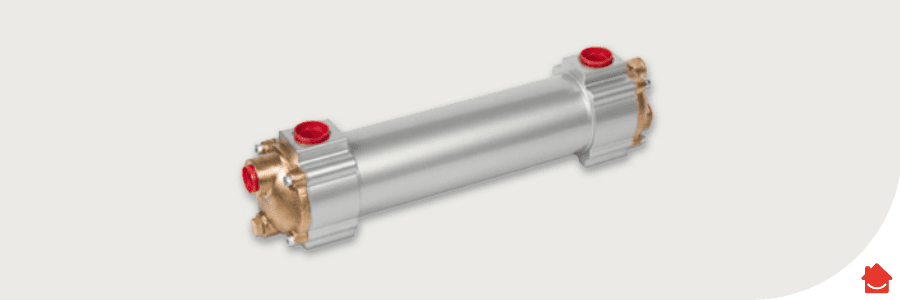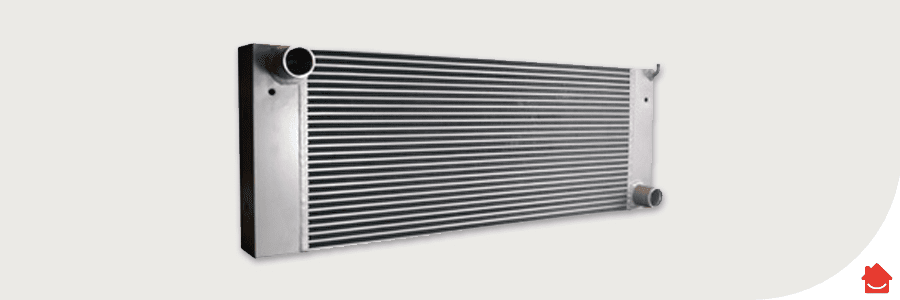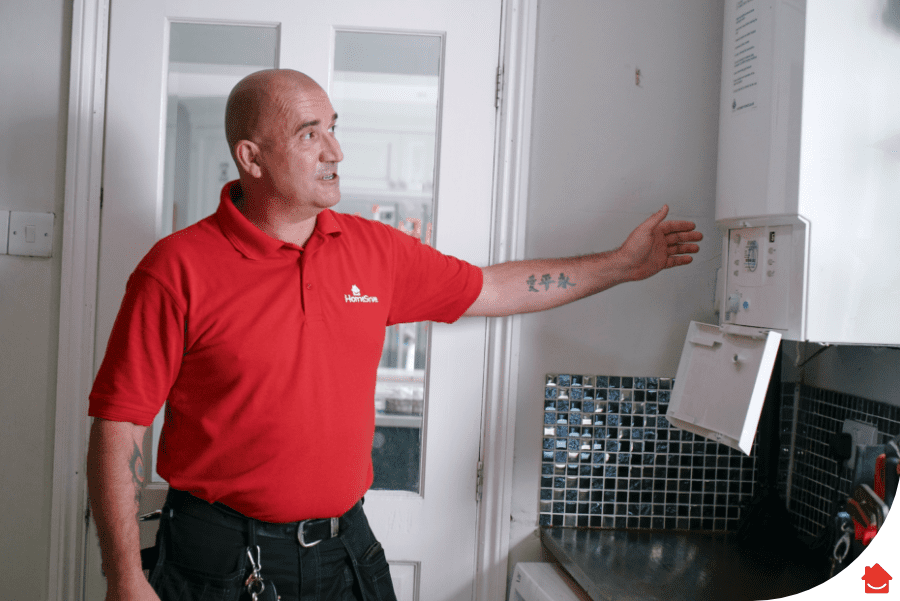Heat exchangers are used in fridges, air conditioners, cars, industrial factories, domestic boilers, and the list goes on. And whether you’ve known it or not, your boiler’s heat exchanger is the key component of your boiler – it’s the reason why your boiler can heat water up and then deliver it to the radiators and taps around your home. So stay chill – at the end of this article you’ll know all about heat exchangers and how the one in your boiler works.
What is the purpose of a heat exchanger?
A heat exchanger does exactly what it says on the tin – its purpose is to exchange heat between two substances, usually water or gas, without letting those two substances mix together.
Heat exchangers are used to recycle heat in the waste gases in smoke stacks at power plants, and to heat swimming pools. They also work in the opposite way in fridges and air conditioning units, drawing heat away from the inside of the fridge or the room to keep it cool.
How does a heat exchanger work?
While the principle of heat exchange remains the same, there are three different types of heat exchanger:
Shell and tube
A shell and tube heat exchanger is a large cylindrical shell that holds a bundle or stack of lots of much smaller tubes inside it. The tube stack is either held in a fixed position or ‘floats’ in the centre of the cylinder, allowing the tubes to expand and contract – plus making it easy to service.

Plate type
Plate heat exchangers work in a similar way to a shell and tube heat exchanger, but instead of tubes, they use a series of stacked plates.

Air-cooled
Air-cooled heat exchangers are mostly used in cars, vans and buses because they don’t require you to lug around any water – this is because they use the air from a fan or the air flow through the car to cool the engine.

What is a heat exchanger in a boiler?
When we burn gas we produce heat as part of the chemical reaction, the heat passes over the internal surface of the heat exchanger. As there is a differential in temperature between the hot gases and the heat exchanger heat is absorbed by the heat exchanger. Waterways pass through the heat exchanger, the heat that the heat exchanger has absorbed is passed into the water, which is then pumped around the heating system to the radiators and the hot water cylinder.
How does a combi boiler heat exchanger work?
Here’s a detailed look at how the heat exchanger works in a combi boiler:
- You switch on your boiler.
- It burns the gas to produce heat, which causes the temperature of the water within the heat exchanger to start to rise.
- When the heated water is pumped around the boiler it passes through a second heat exchanger.
- here the heat held in the water is transferred to the colder water entering the secondary heat exchanger from the cold water mains.
- As the heat is transferred, the cold water temperature rises and flows from the boiler to the hot water taps or showers.
Why are condensing gas boilers energy-efficient?
Condensing gas boilers take the remaining heat from the outgoing waste gases and recycle it, using it to heat the water coming into the system, sometimes with a secondary heat exchanger. It’s one of the most energy efficient boiler options available, and it’s why homeowners and landlords are now legally obliged to install a condensing boiler instead of a non-condensing boiler for a replacement or new installation.
A non-condensing boiler heats up the gas once with one heat exchanger. The waste gases that exit the boiler flue can reach up to 250°C, which is wasted heat that could be recycled. A condensing gas boiler recycles the heat from the waste gases, recycles it and uses it to heat the water, getting maximum efficiency out of the same amount of heat energy.
What happens when the water in my system cools down?
Your boiler pumps the newly heated water through your radiators through the pipes around your home. As the water moves through your radiators, heat from the water is transferred to the cooler air within the room. The water in the heating system will cool. When it reaches your boiler again, the boiler’s thermostat assesses its temperature. If it’s too cool, the boiler will continue to burn gas to produce heat to reheat the water as it goes back to the heat exchanger to be reheated. The water is then pumped back through the whole system again.
How to clean a boiler heat exchanger
Like any part of your central heating system, including the radiators and pipes, your boiler can get a build-up of mineral deposits like magnesium, calcium, and silica (from the water supply). These deposits form a layer on your heat exchanger which insulates it, slowing down the heat transfer. This, at the very least, causes the exchanger to be less efficient, and at the worst causes the exchanger/s to overheat or fail.
Inhibitors within the central heating water prevents the build up of mineral deposits and ensures that the heat exchanger remains as efficient as possible . regular checking of the inhibitor levels is advised at the point of annual service to ensure that a suitable volume of inhibitor remains within the heating systems water
A clean heat exchanger is therefore important to the efficiency of your system, and to keeping your overall costs down as a homeowner or landlord. The best advice is to call a Gas Safe registered engineer, who can take a look at your heat exchanger/s and ask them to carry out a clean. We advise homeowners and landlords who aren’t qualified not to attempt to carry out a DIY clean.
Our team of Gas Safe registered engineers is ready to help
If any component of your hot water and central heating system needs looking at, our repairs service is ready to help. If your boiler can’t be repaired, we’re working with BOXT, one the largest boiler installation companies in the UK, who can install one as soon as the next day if you order before 4pm*.
FAQs
What is a heat exchanger and how does it work?
A heat exchanger transfers heat from one place to another in many modern day machines: domestic boilers use a heat exchanger, as well as fridges, air conditioning units and every vehicle.
What is the purpose of a heat exchanger?
A heat exchanger does exactly what it says on the tin – its purpose is to exchange heat between two substances, usually water or gas, without letting the two substances mix together.
What are 3 examples of a heat exchanger?
- A boiler burns natural gas fuel to heat water using a heat exchanger.
- A hot water cylinder uses a heat exchanger to run hot water heated by the boiler to heat the water inside the cylinder.
- A refrigerator transfers heat from inside the compartment to the outside of the fridge.




